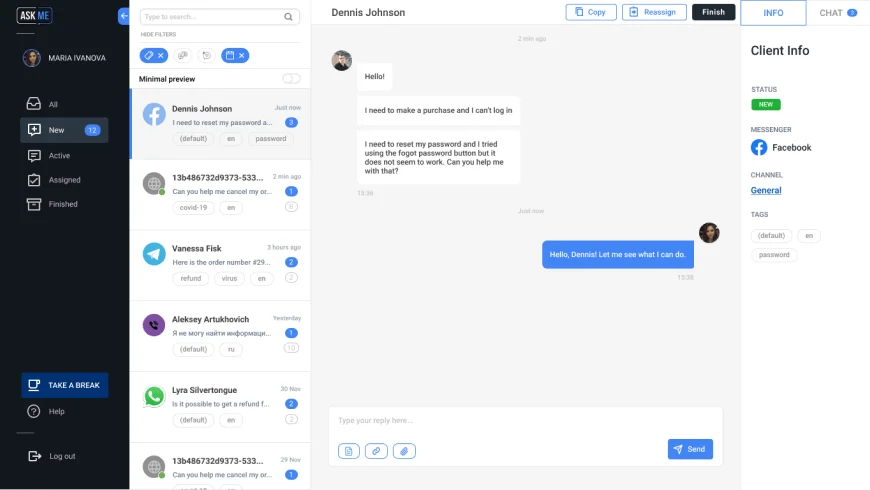A clear understanding of the AI paradigm and its use cases will help executives in identifying the possible applications and ways of implementation that will bring actual business value to the enterprise. The costs of hiring AI-related engineers are high, similarly valuable is the time spent on the hiring process. If you are looking for a verified tech partner, we can take your mind off AI-software development. Adopting AI mechanisms into your technology stack can disrupt core business processes that are highly time-consuming, eg.
- The most popular applications include customer service, with 56% of respondents using AI for this purpose, and cybersecurity and fraud management, adopted by 51% of businesses.
- So, before we hop on to the different applications of AI in business, let’s clarify the terminologies and understand the core ideas they carry.
- Not like the esoteric descriptions of what happened in the earlier days of digital interaction.
- With total Gross Domestic Product (GDP) in 2019 of almost $1.09 trillion and a population of over 13.2 million residents, the L.A.
- Leaders across the organization need to be appraised about the benefits, risks, likely investments, and ROI of AI transformation.
In 2022, one-third of companies reportedly used AI to drive more efficient business processes and operations. Companies are looking to AI to reduce costs and consumption, manage reporting, streamline operations, and solve sustainability challenges. Businesses in most markets reportedly use or consider using automation to drive greater efficiencies in business processes, tasks, and IT operations (AIOps). IT professionals in Australia, Canada, France, UK, and the US are more likely to cite cost savings as the reason.
Gen Z isn’t threatened by generative AI at work but feels unprepared to adopt it
Apple also uses AI to help you find your photo in iCloud, suggest songs on Apple Music, and do a lot more. AI is an ever-evolving field, introducing new technologies ai implementation and advancements regularly. Stay updated with the latest AI trends and best practices to continue leveraging the maximum benefits of AI in your business.

Business leaders must think independently about where it may benefit their company most and how it can fit into their business model. Their decisions should not be formed by vendor companies, consulting firms that want enterprise deals, or hype-mongering tech media. They should also recognize the complexity of AI deployment and manage expectations. AI also helps companies generate automated business reports and conduct sentiment analysis of social media comments to understand people’s perceptions of their brand, products, and services. Banks, financial services, and fintech companies employ AI for predictive analytics and more niche applications, such as wealth management, trading decisions, fraud detection, and loan approvals.
What are the primary barriers to the use of artificial intelligence in business?
Robotics process automation (RPA) encompasses the utilization of software bots to automate repetitive and rule-based tasks such as data entry and analysis, invoice processing, and so on. This survey speaks volumes to the growing number of companies embracing AI in business. Since the exponential growth of artificial intelligence, commercial firms can no longer ignore its underlying potential. But as AI scales across an organization, collaboration becomes more fundamental to success. Faster iteration demands ongoing contributions from stakeholders across the model lifecycle, and finding the correct tool or platform is an essential step.

Artificial Intelligence is starting to change the way we conduct business and how we live our everyday life as consumers. The next step is to identify the end goal of integrating AI into your business. According to a Harvard Business Review survey, several factors can stall AI adoption, ranging from talent shortage to integration issues and so on. MLOps tools such as Model Catalogs and Feature Stores can support this standardization. The new search was supposed to launch in September, but got delayed, one of the people said.
Data management difficulties
It specifically applies to the customer support department, streamlining operations and enhancing customer experience. For instance, instead of addressing every customer query manually, you can use AI-powered chatbots for easy tickets and focus on complex support cases and marketing-related tasks. Sentiment analysis is one of the most impressive uses of AI in business that can be leveraged to monitor and analyze customers’ opinions and emotions through various texts.
The infrastructure speed, availability, and sheer scale has enabled algorithms to tackle more ambitious problems. Also computing power of graphic cards and their price dropped so we can now do things that previously were not cost-effective. According to Statista, advertising, finance, healthcare, consumer, and aerospace are the sectors leading in AI adoption and the AI market itself is projected to grow to almost $60 billions in the next 7 years. Partner with us to unleash the full potential of AI in business to drive sustainable growth and shape the future. Apple, one of the leading tech companies in the world, uses AI and ML in its products like iPhone, Apple Watch, AirPods, or HomePod smart speakers to enable the features of smart assistant Siri.
What is the state of AI adoption?
These insights help companies increase their marketing effectiveness, create more personalized customer experiences, and manage their enterprises more effectively. This article is for business owners and entrepreneurs wondering how artificial intelligence will transform business processes, whether they should invest in the technology, and what challenges they may face. When you’re building an AI system, it requires a combination of meeting the needs of the tech as well as the research project, Pokorny explained. «The overarching consideration, even before starting to design an AI system, is that you should build the system with balance,» Pokorny said. Once you’re up to speed on the basics, the next step for any business is to begin exploring different ideas.
Industries flattened by the Covid crisis — such as travel, hospitality, and other services — need resources to gear up to meet pent-up demand. Across industries, skills shortages have arisen across many fields, from truck drivers to warehouse workers to restaurant workers. Ironically, there is an increasingly pressing need to develop AI and analytics to compensate for shortages of AI development skills.
AI makes the workplace safer for employees, especially in industries like oils and mining.
They must educate themselves about the main categories of AI that offer potentially important business capabilities and business benefits. More often than not, there will be some existing AI infrastructure already in place. To reduce friction in adopting a new tool, choose one that will interoperate with the existing ecosystem. On the production side, model services must work with DevOps tools already approved by IT (e.g., tools for logging, monitoring, governance). Ensure that new tools will work with the existing IT ecosystem or can be easily extended to provide this support.
The survey polled 1,419 executives during a webinar last month to discuss business costs and risks of generative AI. Reuters, the news and media division of Thomson Reuters, is the world’s largest multimedia news provider, reaching billions of people worldwide every day. Reuters provides business, financial, national and international news to professionals via desktop terminals, the world’s media organizations, industry events and directly to consumers. AI-driven massive innovation will fuel many existing industries and may even create new sectors for growth. AI may help in the creation of a knowledge-based economy and, through automation, a better way of life.
More from Maria Kucharczyk and SoftwareMill Tech Blog
These are just the top five examples of business leaders who are leveraging AI to its maximum capabilities. Many more companies like Google, IBM, Adobe, Facebook, Salesforce, Baidu, Microsoft, etc., use AI in various ways to witness the power of AI business transformation. The world’s largest e-commerce platform, Alibaba leverages AI in its daily operations to predict what customers might want to buy. This leading Chinese company automatically generates product descriptions for the site by using NLP. When you look at concrete factors such as productivity, sales improvements, order times, etc., you can easily decide if the AI implementation is working for your organization. Poor data quality is one of the most significant challenges to successful AI adoption.
